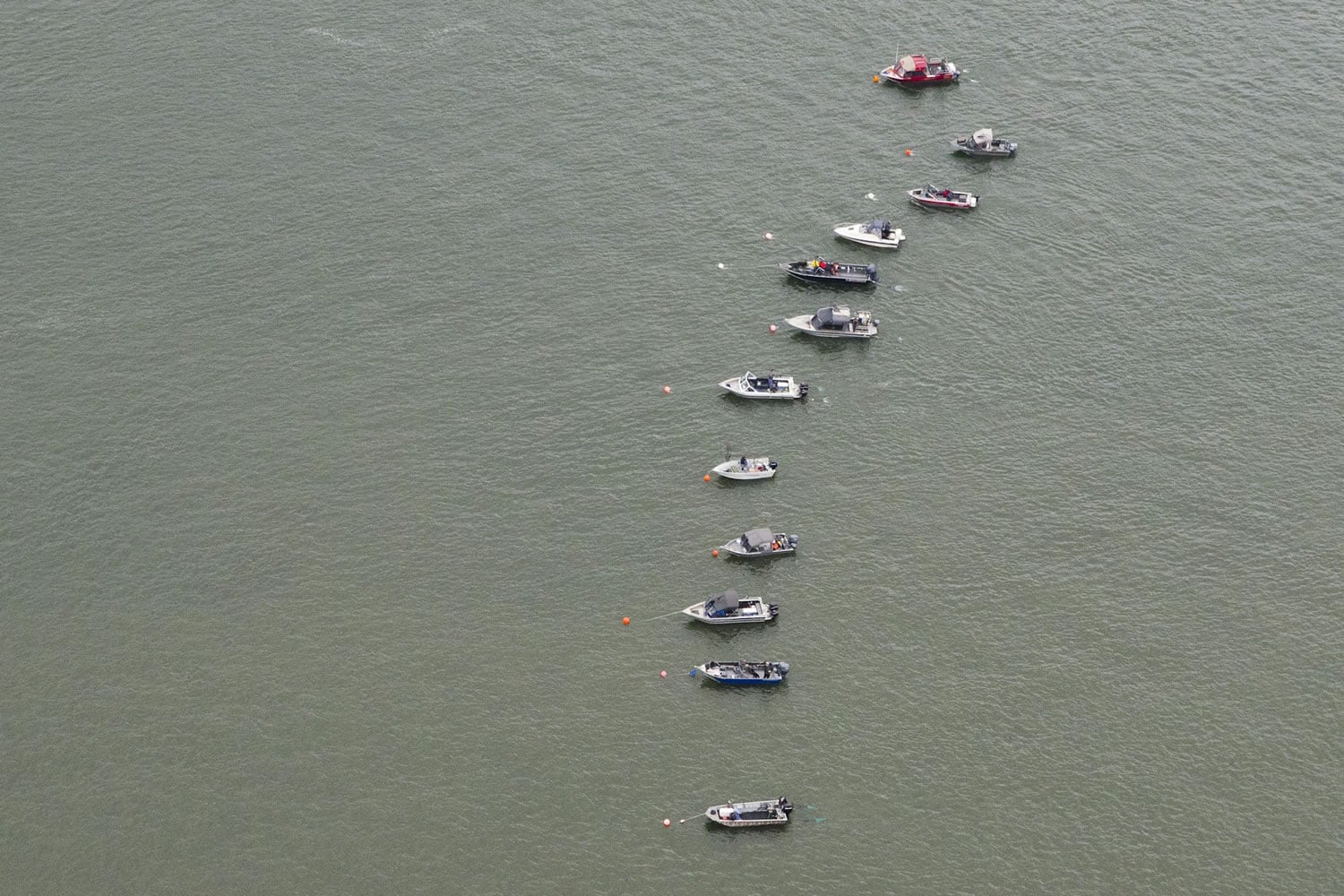Anglers have caught just 9 percent of their early-season allocation of spring chinook salmon in the lower Columbia River and will be allowed to keep fishing at least through April 13.
Sport fishing was scheduled to be closed beginning Saturday.
Washington and Oregon officials on Thursday agreed to extend the season, plus will meet at noon on April 12 to consider a sport-fishing extension beyond April 13.
Guy Norman, regional director of the Washington Department of Fish and Wildlife, said he has a “high expectation” of an extension beyond April 13.
Angling will be closed on Tuesday to allow for a possible gillnet fishing period.
Biologist Robin Ehlke of the Washington Department of Fish and Wildlife said through Friday (April 6) there will have been a projected 54,200 fishing trips in the lower Columbia with a kept catch of 1,796 spring chinook.
Of those fish, 1,163 upper Columbia-origin spring chinook will have been kept or died after being released. The early-season (prior to early May) allowance is 12,700 upper Columbia chinook.
The six additional days of fishing are expected to result in a handle of 1,500 spring chinook, with 1,245 kept and 875 upper Columbia fish dead. That would bring the total upper Columbia catch plus release mortalities to 2,038, or 16.1 percent of the early allocation.
John North of the Oregon Department of Fish and Wildlife said adding the weekend of April 14-15 would add 1,500 more chinook to the catch, 1,250 kept fish and 950 upper Columbia chinook. That would bring the sport catch to about 24 percent of the early allocation.
The gillnet fleet caught 2,500 chinook on Tuesday from 151 deliveries. North said about 1,600 were upper Columbia chinook, or 27 percent of the commercials early-season allocation of 5,914 salmon.
Water conditions in the lower Columbia are not conducive to good salmon fishing.
Ehlke said the flow at Bonneville Dam is 346,000 cubic feet per second compared to a five-year average of 215,000 cubic feet per second. The gauge height at Vancouver is 14.9 feet, but expected to drop to 11.1 feet by Tuesday.
Visibility at Bonneville is 3 feet, compared to an average 4.2 feet for the date.
The Willamette is extremely high and muddy, with visibility at less than a foot. The Willamette is projected to drop from 15.4 feet at the Morrison Bridge in Portland today to 11.3 feet by Monday.
Downstream of Longview at Beaver Army Terminal, the Columbia has just a foot of visibility, North said.
Bruce Jim, representing the four Columbia River treaty tribes, who fish upstream of Bonneville Dam, called for no sport-fishing extension.
The count at Bonneville through Wednesday is just 49 chinook total, the lowest cumulative count since at least 1970, Jim said.
If this year’s run timing matches 2006, the latest on record, then the upper Columbia spring run would be about 104,000, far less than the forecast of 314,000, Jim said.
“Right now, this run size is still primarily paper fish,” Jim said. “Our people can not eat paper fish.”
Norman said small counts at Bonneville Dam early in the season are no longer an accurate indicator of the run. A year ago, the count did not reach 100 a day until April 15 and 1,000 a day until April 25, he said.
North said if the upper Columbia run is 105,000, non-Indians downstream of Bonneville Dam can catch up to 5,900 under catch-balancing agreements.
Liz Hamilton of the Northwest Sportfishing Industry Association asked that the gillnetters fish at night on Tuesday or at least a portion of the lower Columbia be closed to gillnetting so the guides will have a place to fish.
The Willamette River is so muddy the guides can not shift there and likely will have to cancel trips, she said.
Steve Williams, an assistant administrator of the Oregon Department of Fish and Wildlife, said the river is too high and dangerous to fish at night currently.
The Columbia River Compact will meet by teleconference at 1 p.m. Monday to consider adopting a gillnetting period on Tuesday.




